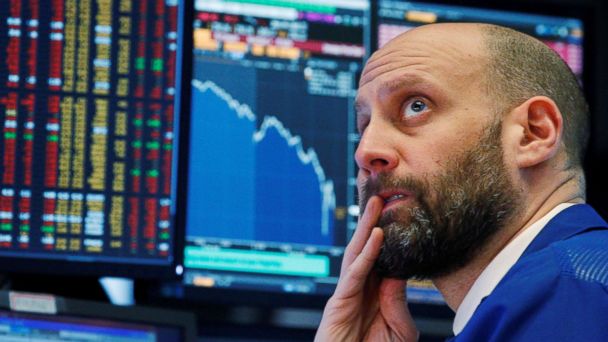Stocks presented a mixed picture this morning, with the Dow Jones Industrial Average rising roughly 275 points (+0.8%). By contrast, the S&P 500 edged down by 0.1%, and the tech-heavy Nasdaq Composite fell by 0.6%. This performance comes as the markets gear up for their strongest month this year, fueled by investor bets on impending interest rate cuts following a crucial consumer inflation report.
As November’s trading draws to a close, these indexes are flirting with fresh 2023 closing highs, riding the wave of a robust rally. This surge in optimism is rooted in the belief that the Federal Reserve has finished its cycle of interest rate hikes.
The markets received a boost from today’s release of the Personal Consumption Expenditures (PCE) Index, the Fed’s preferred inflation measure, which aligned with expectations. The PCE Index reported a year-over-year growth of 3% for October, a decrease from September’s 3.4%. The core PCE, which strips out the volatile food and energy sectors, rose by 3.5%, a slight drop from the previous month’s 3.7%, matching the forecasts of economists surveyed by Bloomberg. On a month-over-month basis, core PCE increased by 0.2% in October, down from September’s 0.3%.
Core PCE, often cited by Federal Reserve Chair Jerome Powell, is a critical metric for investors. EY senior economist Lydia Boussour noted, “For the Fed, fresh signs of softer inflation and consumer demand confirm it is well positioned to remain on hold at the December policy meeting. We reiterate our long-standing view that the Fed’s tightening cycle is likely complete. With the Fed’s favored inflation gauge — core PCE inflation — likely falling below 2.5% in the spring, we expected the first Fed rate cut in June 2024.”
Before the release of the PCE data, market sentiment had already shifted towards the likelihood of the Fed halting its rate hikes, as recent economic data indicated a decline in inflation while the economy continued to expand. This sentiment was further reinforced by recent remarks from Fed officials, suggesting the possibility of earlier-than-anticipated rate cuts.
Atlanta Fed president Raphael Bostic, in a recent essay, observed, “There’s no question the rate of inflation has slowed materially over the past year-plus.” As of this morning, the markets are pricing in a 74% chance of a rate cut by the end of the Fed’s May meeting, a significant increase from just a 38% chance a month ago. By June, the likelihood of a rate cut has risen to 92%.
This PCE release echoes the Consumer Price Index (CPI) data from November 14, which showed headline inflation slowing to its lowest pace since September 2021.
In Europe, eurozone inflation saw a surprising drop in November to 2.4%, challenging the European Central Bank’s view of persistent price growth. This galvanized US equity bulls pre-market.
Oil prices have been on the rise, too, for three consecutive days following OPEC+’s agreement to implement additional output curbs of 1 million barrels per day. Despite this, West Texas Intermediate futures were down more than 2% at around $75 per barrel, while Brent crude hovered just above $82 per barrel.
KPMG US energy leader Angie Gildea commented, “Production increases in the US, Guyana, and Brazil will soften the blow caused by OPEC’s announced production cuts but that doesn’t mean consumers in the US won’t feel some sting from this at the pump. Further, even though weaker global economic expectations have been keeping prices relatively low right now, it just takes one wildcard event to disrupt the market and put us back in a tight supply situation that could send prices back up.”
The market has been speculating over OPEC’s decision since the oil cartel postponed its scheduled meeting last week due to internal disagreements about output cuts for the next year.
Scott Bauer, CEO of Prosper Trading Academy, noted, “The dissension among the members of OPEC+ is there. And that dissension stems from … some of the members not wanting to continue cuts because they want to get some of their market share back.”
Current cuts by OPEC aim to constrain global supply and support oil prices. In April, Saudi Arabia announced unilateral reductions of more than 1 million barrels per day, with Russia also announcing constraints of 500,000 barrels per day.
Analysts had anticipated that OPEC would likely extend these reductions into the next year, possibly deepening them. PVM oil broker John Evans remarked, “A rollover of cuts and voluntary cuts will send the market south, for the current level of supply clamp is not enough to persuade the market that it is ‘tight.'”
Despite these cuts, crude prices are almost 20% lower than the 2023 highs reached in late September, amid concerns of slowing demand and increasing supply. Andy Lipow, president of Lipow Oil Associates, recently stated, “I think over the next couple of months we’re going to continue to see pressure on these prices.”
Recession fears would skew bearish for oil even with a functional OPEC+. Dissent among the oil-producing nations could cause an even sharper decline in the months ahead, which may intensify broader market anxiety over a recession, leading to an (eventual) marketwide selloff as soft economic data rolls early next year.








